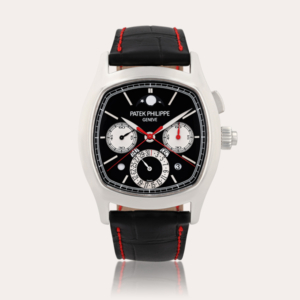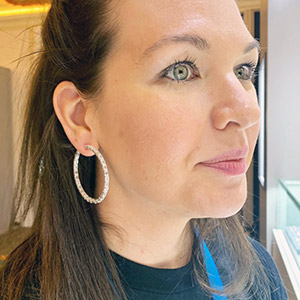
The International Grown Diamond Association (IGDA) has always been an odd group. It debuted with much fanfare in 2016. Yet, apart from providing input for the 2018 rewrite of the Federal Trade Commission (FTC) jewelry Guides—when it was apparently quite effective—it was never clear what the organization actually did.
Since dues were minimal, members didn’t mind. (“The price is right,” one company head told me.) But that also meant that the IGDA was perpetually underfunded. Its three-person board was composed of people associated with IIa Technologies, the Singapore-based diamond grower. Vishal Mehta, IIa’s CEO, was IGDA’s first president; longtime IIa partner Richard Garard served as secretary-general and spokesperson.
Now, Garard (pictured), who heads Morrisville, N.C.–based Lambda Technologies and spin-off Microwave Enterprises, plans to “relaunch” and “redefine” the IGDA, which, he admits, has been dormant for the last two years.
“When COVID hit, everything kind of stopped,” he tells JCK. “I was busy trying to keep a couple of companies alive.
“A lot of people were asking me what IGDA was up to. We survived through some pretty difficult times. We kept a number of people on board. And then when [MVI Marketing CEO and WD Lab Grown board member] Marty [Hurwitz] said he wanted to jump in and help and a few others [asked to get involved], we decided to regroup the association…. The fact that we stayed relevant, and survived, when others haven’t been able to, is pretty significant.”
IIa Technologies remains a “founding and corporate member,” says Garard, but he is basically running the show now, serving as both secretary-general and president. He’s hoping to fashion an entirely new board.
IIa has “stepped to the background,” he says. “They do not serve on the board, and they are not as involved anymore. But they are very supportive members, and I will lean on them, like I do on everybody, for counsel, feedback, and support.”
He says the relaunch will be a “process” that will hopefully attract new blood.
“I’m not going to do this forever,” he says. “We are looking for that transition now.’
For the moment, though, the group is mostly him.
“My time is volunteer. My associates that work with me are all volunteer. All the board and the advisers are volunteer. Our dues are not extravagant. People tried that. The Lab Grown Diamond Council tried to go big-time, and that didn’t work. This is still an industry where the bulk of people do not want to write a big check. They are still evolving their businesses. [We don’t have] a huge budget, but we do have people wanting to sponsor various programs that we’re defining.”
While many original members have rejoined the group, two founding members—WD and Diamond Foundry—have so far chosen not to. Garard says he’s in touch with them and hopes they change their minds.
IGDA 2.0 aims to provide training and promotion for lab-created diamonds and boost demand in overseas markets.
Retailers are “still figuring out how to talk about lab-grown diamonds,” he admits. “Maybe that’s why some of the international markets are a little slow to adopt and move forward on it.… One thing we’re doing, in reaching out to members, is to get some regional officers and leaders to help build awareness in the various markets.”
The IGDA has redesigned its website, which you can see here. Its initial page on lab-grown “eco-friendliness” quoted a seven-year-old research paper from Frost & Sullivan, which was apparently written while the firm was helping establish the IGDA. (After JCK ran a story questioning the study, Frost & Sullivan took it down.) When I noted that not disclosing material connections runs counter to the endorsement guidance from the aforementioned FTC—and the term eco-friendly violates FTC’s Green Guides—the IGDA changed its wording.
That said, IGDA’s site still has a “sustainability” page, which, like most lab-grown diamond sustainability pages, has little to say about the product it’s touting. It features pictures of mines but doesn’t show any diamond-growing facilities, likely because they’re factories.
As I’ve said many times, this negative approach strikes me as wrong-headed and ultimately self-defeating. Why would any sensible retailer or manufacturer support an organization that denigrates one of its products—particularly a core product? Not only do several IGDA members sell both lab-grown and natural diamonds, but some lab-grown e-tailers have also used natural diamonds for side stones.
Both the lab-grown and natural diamond industries have bad elements, and some lab-grown diamonds are produced in a manner that isn’t “sustainable” or “eco-friendly” in any sense of the term. That doesn’t tarnish the whole sector, especially those lab-grown companies that are trying to do the right thing (and some are). With lab-grown diamonds, as with any product—including natural gems—companies that tout their sustainability credentials should provide truthful, complete information about how their diamonds were produced, where they come from, who is behind them, and what is their eco-impact.
(A recent academic study, which happily was not sponsored by either sector, compared the energy use between the two and found it pretty much a wash. I hoped that would shut down the now-extremely-tired eco-debate, but old habits die hard.)
For his part, Garard doesn’t think the two sectors need to be at odds.
“We have brought a number of buyers back into the store because of lab-grown diamonds. I don’t think we’ve taken away from the mined diamond market. I have always said there’s room for both products in this market sector. There will always be demand for mined diamonds and the allure of a mined diamond. But there will be continuing increased demand for lab-grown diamonds in the jewelry sector.”
Hurwitz has also said there “isn’t a lot of cannibalization going on [between mined and lab].” If that’s true, why take potshots?
On the non-gem side, Garard believes that “the industrial scientific sector will pull a lot of [lab-grown diamond] production forward.” He notes that manufacturers are increasingly using synthetic diamonds because the material is a good heat conductor.
“It’s a pretty significant benefit to reduce the heat,” he says, particularly in “high-performing devices that are getting smaller and smaller.”
Yet he doesn’t believe we’ll see the long-discussed possible use of lab-grown diamonds for semiconductors anytime soon.
“Semiconductors made of diamonds, or computer chips made of diamonds, those are long-term,” he says. “What is needed is a commercial viable process.… From the research I follow, that is still quite a ways away. But certainly, people have progressed research in that area nicely.
“The larger market sector will take time to evolve. There is tremendous potential there.”
The IGDA also has tremendous potential, despite any issues I have with its current presentation. While the lab-grown business is doing extremely well, it’s still in its “Wild West” phase. It needs to be cleaned up. A serious industry organization could set ethical guardrails, establish best practices, work on still-thorny issues such as nomenclature, liaison with standard-setting groups like CIBJO and the Responsible Jewellery Council, and provide much-needed transparency on production statistics and processes. The Lab Grown Diamond Council hoped to do some of those things but didn’t get a chance. It did bring in SCS Global Services to develop a sustainability certification program, which marked a milestone as far as lab-grown eco-cred. (When growers first met SCS, execs there warned that simply criticizing mined diamonds without differentiation would continue the “race to the bottom,” price-wise. That has largely happened.)
Now, IGDA 2.0 has a real chance to leave that behind and make a positive impact. And if it does, that will ultimately help the lab-grown business become truly sustainable, in the sense of being built to last.
(Photo courtesy of the International Grown Diamond Association)
Follow JCK on Instagram: @jckmagazineFollow JCK on Twitter: @jckmagazine
Follow JCK on Facebook: @jckmagazine







